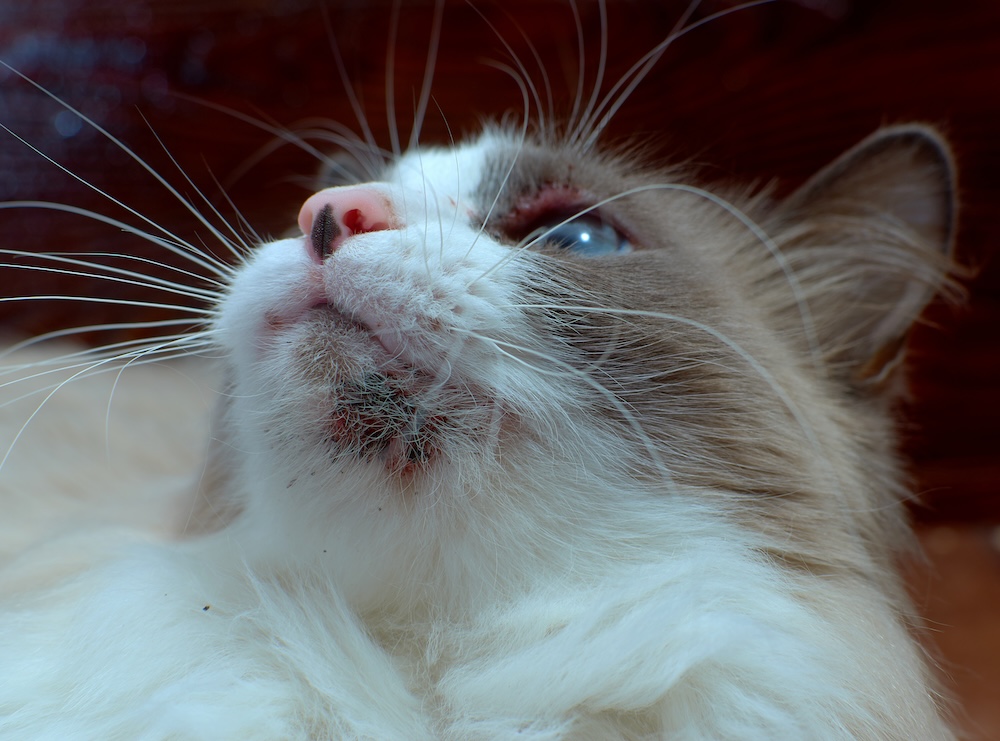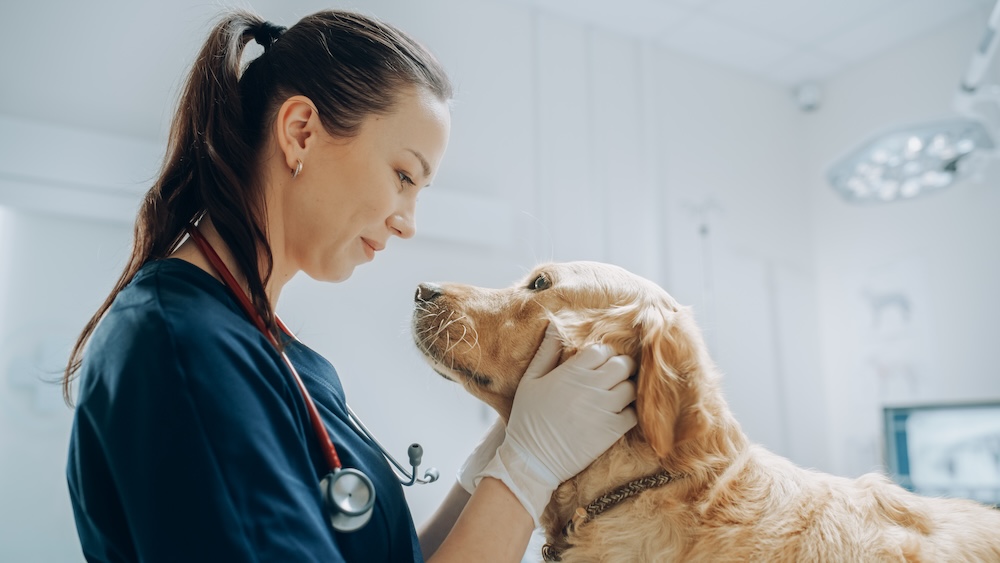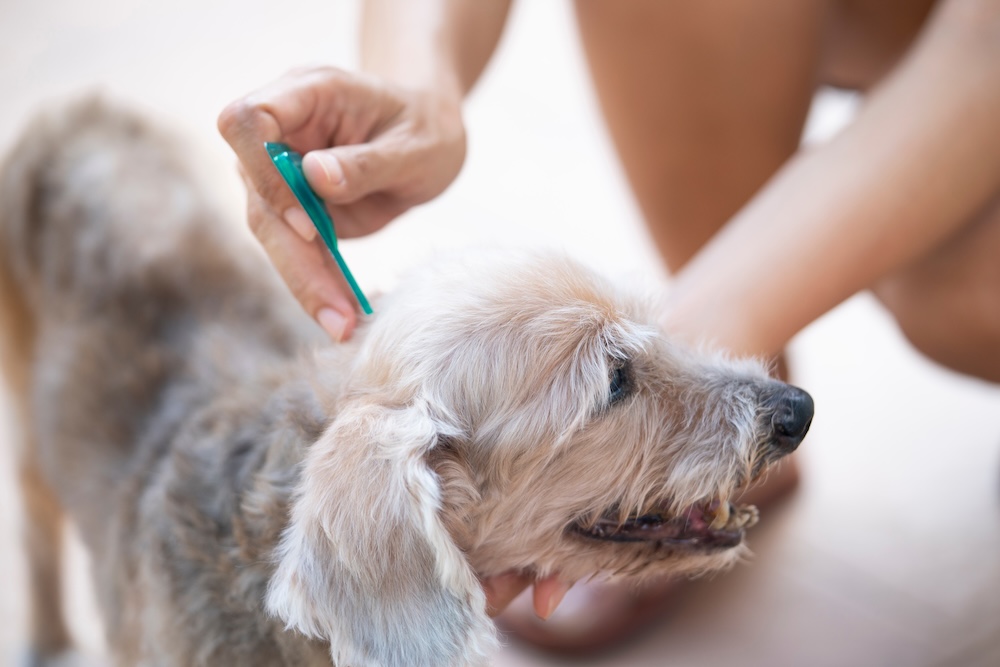Every pet owner wants their furry companion to enjoy the best possible health, and that includes taking care of their skin. One skin issue that might surprise you is cat acne. Just like humans, cats can develop acne, which appears as small pimples or blackheads around their chin and lips. Although it may seem minor, untreated cat acne can lead to more severe skin problems and discomfort. In this article, we’ll delve into cat acne treatment, exploring its causes, symptoms, and how you can help your feline friend maintain clear, healthy skin.
Understanding Cat Acne
Cat acne, also known as feline acne or furunculosis, is a common dermatological condition that can affect cats of all breeds, ages, and genders. This condition primarily appears on a cat’s chin and lips, where it manifests as comedones (blackheads) or small, red pustules (pimples). While the exact cause of cat acne is not entirely understood, it is believed to result from an overproduction of oil (sebum) by the sebaceous glands, leading to clogged hair follicles.
At first glance, cat acne may seem like a minor cosmetic issue. However, if left untreated, it can lead to more severe skin problems. The clogged pores can become infected with bacteria, leading to folliculitis, which is an inflammation of the hair follicles. This bacterial infection can cause the acne to become more pronounced, swollen, and painful for your cat. In severe cases, the infection can spread, leading to abscesses and significant discomfort.
In addition to bacterial infections, untreated cat acne can cause persistent itching and irritation. Your cat may start to scratch or rub their chin against surfaces in an attempt to alleviate the discomfort, which can further irritate the skin and exacerbate the condition. This scratching can lead to secondary infections and even hair loss in the affected area.
It’s important to note that while cat acne can be recurrent, it is usually manageable with proper care and treatment. Early detection and intervention are key to preventing the condition from progressing to more severe stages. By understanding the signs and underlying causes of cat acne, you can take proactive steps to ensure your cat receives the appropriate treatment and maintains healthy skin.
Causes of Cat Acne
Identifying the underlying causes of cat acne is crucial for effective prevention and management. Some common factors contributing to this condition include:
- Poor Grooming Habits: Cats that don’t groom themselves properly may be more prone to acne due to the accumulation of oil and dirt on their skin.
- Allergies: Allergic reactions to food, fleas, environmental factors, or even certain cleaning products can trigger cat acne.
- Stress: Stress can impact a cat’s overall health, including their skin condition. Stressful situations can exacerbate or trigger acne outbreaks.
- Plastic Bowls: Using plastic food and water bowls can contribute to cat acne. The porous surface of plastic can harbor bacteria, which can then transfer to your cat’s skin.
Symptoms of Cat Acne
Recognizing the symptoms of cat acne is the first step toward effective cat acne treatment. Common symptoms include:
- Blackheads or small red bumps on the chin and lips
- Swelling and inflammation in the affected area
- Hair loss around the chin
- Crusty sores or scabs if the acne becomes infected
- Bleeding from the skin on the chin
Cat Acne Treatment
Addressing cat acne promptly can prevent complications and ensure your feline friend remains comfortable and healthy. Both home care and professional veterinary treatments can be effective in managing and preventing cat acne. Here’s how you can tackle this condition:
Home Care Treatments
- Switch to Stainless Steel or Ceramic Bowls: Replace plastic food and water bowls with stainless steel or ceramic alternatives. Plastic bowls can harbor bacteria in their porous surfaces, which can transfer to your cat’s skin. Stainless steel and ceramic bowls are easier to clean and less likely to cause irritation.
- Topical Treatments: For mild cases of cat acne, your veterinarian may recommend over-the-counter topical treatments, such as benzoyl peroxide gels or medicated wipes designed for pets. These treatments help to unclog pores, reduce inflammation, and prevent bacterial infections.
- Dietary Adjustments: Evaluate your cat’s diet to ensure they are receiving a balanced and nutritious meal. Sometimes, food allergies or sensitivities can contribute to skin issues, including acne. Consult your veterinarian for dietary recommendations that support healthy skin.
- Stress Reduction: Minimize sources of stress in your cat’s environment. Provide a stable, quiet space for your cat to relax, and consider using calming products, such as pheromone diffusers, to help reduce stress levels.
- Flea control: Protection from flea infestations is an important part of preventative care. For allergic cats, it may only take a few fleas or small amounts of flea dirt to trigger a flea allergy reaction including the development of chin acne.
Veterinary Treatments
- Professional Cleaning: If home care treatments are not sufficient, your veterinarian may perform a professional cleaning of the affected areas. This involves using specialized products and techniques to thoroughly cleanse the skin and remove debris.
- Prescription Medications: For more severe or persistent cases of cat acne, your veterinarian may prescribe stronger topical or oral medications. These can include antibiotics or antifungals to treat bacterial and yeast infections and/or corticosteroids to reduce inflammation.
- Medicated Shampoos and Wipes: Your vet may recommend medicated shampoos or wipes that contain active ingredients specifically formulated to treat cat acne. These products can be used regularly to manage the condition and prevent flare-ups.
- Laser Therapy: In some cases, laser therapy may be used to treat severe or resistant cat acne. This advanced treatment option can help reduce inflammation and promote healing by targeting the affected areas with focused light energy.
- Follow-Up Appointments: Regular follow-up appointments with your veterinarian are crucial to monitor your cat’s progress and adjust the treatment plan as needed. These visits allow your vet to evaluate the effectiveness of the treatments and make any necessary modifications to ensure optimal results.
By combining diligent home care with professional veterinary treatments, you can effectively manage and prevent cat acne, keeping your feline friend’s skin healthy and comfortable. At Faithful Friends Veterinary Clinic, we are dedicated to providing comprehensive care and support for your pet’s dermatological needs. If you have any concerns about your cat’s skin health, don’t hesitate to reach out to our experienced team for personalized advice and treatment options.
Preventing Cat Acne
Preventing cat acne requires diligent hygiene practices and creating a clean, healthy environment for your feline friend. Here are some specific measures to help keep your cat’s skin clear and healthy:
- Regularly clean your cat’s food and water bowls with hot, soapy water.
- Keep your cat’s living area clean and free from excess dirt and dust.
- Monitor your cat’s grooming habits and assist with regular grooming if necessary.
- Provide a balanced diet that meets your cat’s nutritional needs.
- Regularly check your cat’s chin and lips for any signs of acne and address them promptly.
Chat with a Vet
At Faithful Friends Veterinary Clinic, we are committed to helping you provide the best care for your feline friends. Understanding and addressing cat acne is an important aspect of maintaining your cat’s overall health and well-being. If you notice any signs of acne in your cat, don’t hesitate to contact us for professional advice and treatment options. Our experienced team is here to ensure your cat remains happy, healthy, and comfortable. Remember, effective cat acne treatment starts with early detection and consistent care.




